2025 Lab Safety Award Winners!
Safety Services has recognized six labs across various schools and colleges for their strong safety emphasis and their actions to Think Safe. Act Safe. Be Safe. The Takamura Lab in the College of Engineering takes this year's top Lab Safety Award. Profiles of each winning lab can be found below.
Grand Prize Winner for 2025
Dr. Yayoi Takamura
College of Engineering
The Takamura Lab takes this year's top Lab Safety Award and a $6,000 cash prize.

Congratulations to all our School and College Winners:
- Nicklisch Lab - College of Agricultural and Environmental Sciences
- Recanzone Lab - College of Biological Sciences
- Pantic Lab - College of Letters and Science
- Winter Lab - School of Medicine
- Kaplan Lab - School of Veterinary Medicine
Past Winners

2024 Lab Safety Award Winners
- Dr. Maria Marco's Lab in the School of Agricultural and Environmental Sciences takes the top Lab Safety Award for 2024 and a $6,000 cash prize.
- What did the Marco Lab do with their top prize?
They replaced aging lab equipment and supported an undergraduate student’s summer research project, offering valuable hands-on experience.
- What did the Marco Lab do with their top prize?
- School and College Winners:
Chen Lab - College of Biological Sciences
Hostinar Lab - College of Letters and Science
Tan Lab - College of Engineering
Tell Lab - School of Veterinary Medicine
Wulff Lab - School of Medicine
- 2023 Lab Safety Award Winners
- Dr. Brian Bird's One Health Institute Lab in the School of Veterinary Medicine takes the top Lab Safety Award for 2023 and a $6,000 cash prize.
School and College Winners:
Blanco-Ulate Lab - College of Agricultural and Environmental Sciences
Heyer Lab - College of Biological Sciences
Mukhopadhyay Lab - College of Letters and Science
Oldroyd Lab - College of Engineering
Zeki Lab - School of Medicine - 2022 Lab Safety Award Winners
- Dr. Rachael Bay's Lab in the College of Biological Sciences takes the top Lab Safety Award for 2022 and a $6,000 cash prize.
School and College Winners:
Burns Lab - School of Medicine
Fernandez-Bayo Lab - College of Engineering
Imai-Leonard Lab - School of Veterinary Medicine
Krubitzer Lab - College of Letters and Science
Melotto Lab - College of Agricultural and Environmental Sciences - 2021 Lab Safety Award Winners
- Dr. Carolyn Slupsky's Lab in the College of Agricultural and Environmental Sciences takes the top Lab Safety Award for 2021 and a $6,000 cash prize.
School and College Winners:
Gomes Lab - College of Biological Sciences
La Saponara Lab - College of Engineering
M & M Lab - School of Medicine
Miller Lab - School of Veterinary Medicine
Pantic Lab - College of Letters and Science - 2020 Lab Safety Award Winners
- >> Read about the winning 2020 labs
- 2019 Lab Safety Award Winners
College of Letters and Sciences claims the inaugural grand prize
Dr. Karen Bales' Lab won the $5,000 Grand Prize and a year's worth of bragging rights for excellence in safety, based on inspection findings and questionnaires submitted by safety professionals.
Bales Lab, Department of Psychology
 College of Letters & Sciences Dr. Karen Bales’ lab won the $5,000 Grand Prize for having an extremely strong safety culture, built through hard work and communication. The lab examines two monogamous species – the prairie vole and the coppery titi monkey. Their lab consists of 46 dedicated members who work hard to answer a variety of research questions related to the biology of monogamy and parenting. While the lab is technically divided into two spaces, they work together as one team with the vole lab on UC Davis’ campus and the titi monkey lab at the California National Primate Research Center (CNPRC). For them, lab safety is an ongoing process and requires the active participation of everyone in the lab. Weekly hour-long meetings offer opportunities for the Bales Lab members to become familiar with one another, offer advice, foster discussions, and share progress. They believe the community is a big reason as to why they are able to keep their lab spaces safe. This year, the lab added a new element of safety education to an existing Bales lab tradition by expanding its end-of-the-year jeopardy game, which usually focuses on science, to include lab safety questions. The game is just one part of an annual celebration to thank the lab members for their hard work. Safety is a community effort and they attribute their safety success to the many members of the Bales Lab community. As the grand $5,000 grand prize winner, they’ve been talking about buying additional equipment that will help with lab safety, such as walkie-talkies for when graduate students are working in monkey rooms alone, and possibly a new cart that would make moving equipment around easier and safer.
College of Letters & Sciences Dr. Karen Bales’ lab won the $5,000 Grand Prize for having an extremely strong safety culture, built through hard work and communication. The lab examines two monogamous species – the prairie vole and the coppery titi monkey. Their lab consists of 46 dedicated members who work hard to answer a variety of research questions related to the biology of monogamy and parenting. While the lab is technically divided into two spaces, they work together as one team with the vole lab on UC Davis’ campus and the titi monkey lab at the California National Primate Research Center (CNPRC). For them, lab safety is an ongoing process and requires the active participation of everyone in the lab. Weekly hour-long meetings offer opportunities for the Bales Lab members to become familiar with one another, offer advice, foster discussions, and share progress. They believe the community is a big reason as to why they are able to keep their lab spaces safe. This year, the lab added a new element of safety education to an existing Bales lab tradition by expanding its end-of-the-year jeopardy game, which usually focuses on science, to include lab safety questions. The game is just one part of an annual celebration to thank the lab members for their hard work. Safety is a community effort and they attribute their safety success to the many members of the Bales Lab community. As the grand $5,000 grand prize winner, they’ve been talking about buying additional equipment that will help with lab safety, such as walkie-talkies for when graduate students are working in monkey rooms alone, and possibly a new cart that would make moving equipment around easier and safer. College Winners
Facciotti Lab, College of Engineering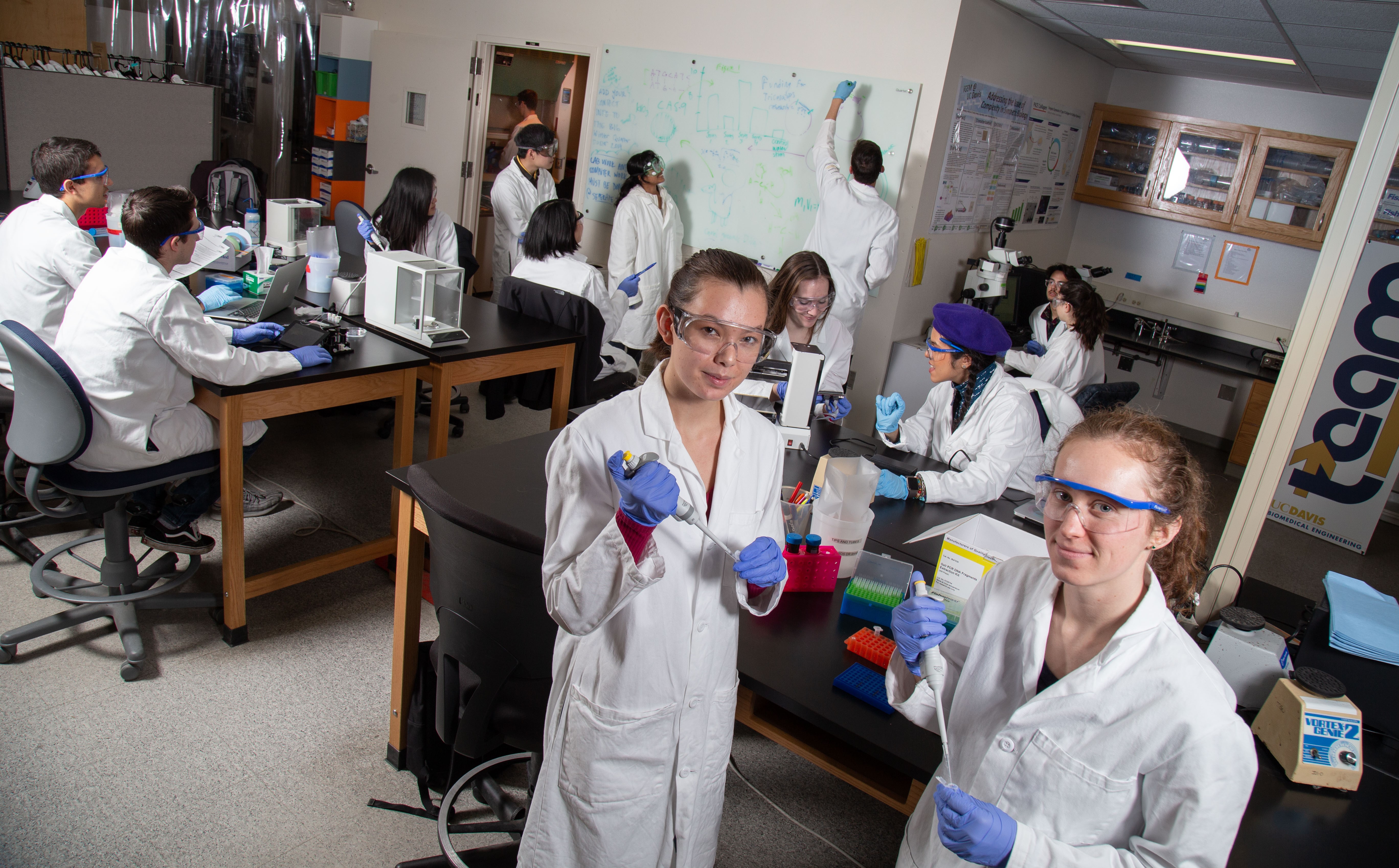 Dr. Marc Facciotti runs two labs in the College of Engineering. One includes a research lab and the other includes a teaching and student project lab. The labs seek to understand biological organizational principles and to develop improved mammalian tissue systems. Together, these two spaces collectively serve hundreds of students each year. Inside each lab, the team has worked hard to develop a culture of safety. In fact, this culture they have created is a major contributing factor to keeping their labs so safe. The students inherently know not to proceed with an experiment if the instructions over waste generation or disposal are not clear. It is their constant vigilance to maintaining this type of culture that makes their lab a safe place to work. They also employ consistent formal and informal trainings throughout the year, as well as to conduct frequent safety reminders. They encourage every lab member to work in partnership with campus safety services and to continuously update and improve how they approach safety in both labs. Another key to safety inside their labs is to adopt user buy-in and to fully utilize their talented and knowledgeable staff. They’re proud of the way their staff has implemented policy and their dedication to keeping everyone safe.
Dr. Marc Facciotti runs two labs in the College of Engineering. One includes a research lab and the other includes a teaching and student project lab. The labs seek to understand biological organizational principles and to develop improved mammalian tissue systems. Together, these two spaces collectively serve hundreds of students each year. Inside each lab, the team has worked hard to develop a culture of safety. In fact, this culture they have created is a major contributing factor to keeping their labs so safe. The students inherently know not to proceed with an experiment if the instructions over waste generation or disposal are not clear. It is their constant vigilance to maintaining this type of culture that makes their lab a safe place to work. They also employ consistent formal and informal trainings throughout the year, as well as to conduct frequent safety reminders. They encourage every lab member to work in partnership with campus safety services and to continuously update and improve how they approach safety in both labs. Another key to safety inside their labs is to adopt user buy-in and to fully utilize their talented and knowledgeable staff. They’re proud of the way their staff has implemented policy and their dedication to keeping everyone safe.Burns Lab, School of Medicine
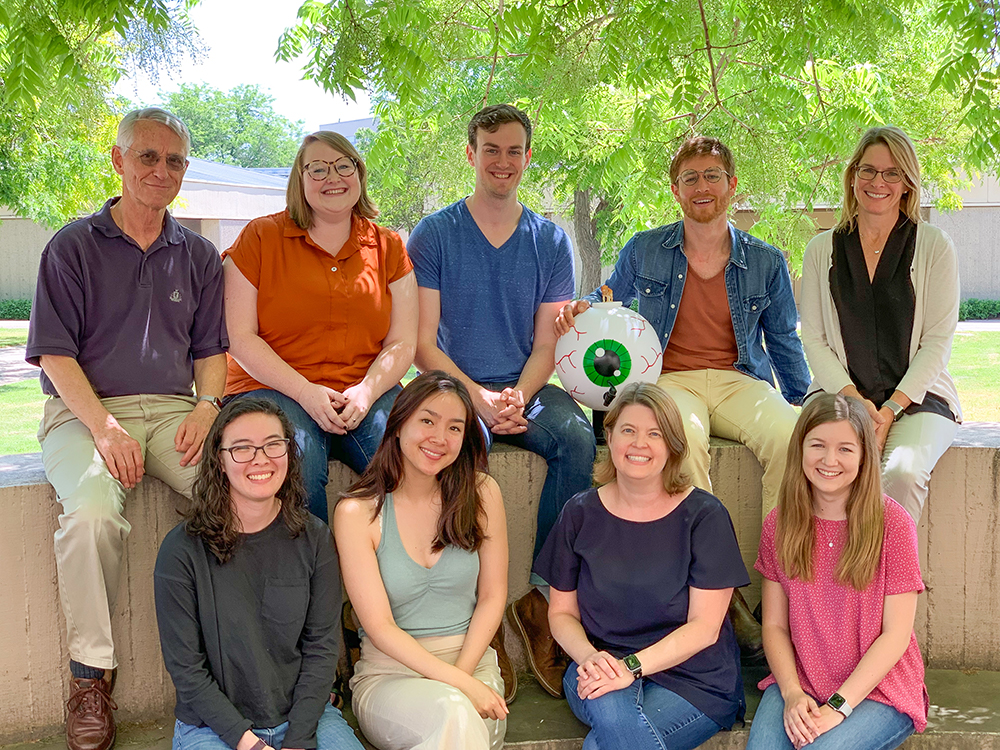 To see what the culture of safety looks like in the Burns-Pugh lab at the School of Medicine, show up on a Friday and be prepared to watch 10 people go into action. The lab studies photoreceptors of the retina and those who work with Principal Investigators, Marie Burns, and Edward Pugh, pause what they’re doing once a week for “Friday Frenzy” mode. That’s when everybody takes the time to look around the lab to focus on cleaning and safety. Fume hood? Check. Scavenging system? Check. The sharps box? Check. Lab manager, Sarah Karlen says “when everyone takes just 10 minutes to look around the lab it means it’s not a burden on anyone person. It refreshes everyone’s mind to look around the environment and make sure it’s safe.” But safety doesn’t end with Friday Frenzy. The Burns-Pugh lab has a breakroom space, which makes complying with the no-food-and-drink rules much easier. And most notably, the lab has a favorable reputation for keeping solid documentation up-to-date and sends everyone to lab safety training annually to review the latest rules.
To see what the culture of safety looks like in the Burns-Pugh lab at the School of Medicine, show up on a Friday and be prepared to watch 10 people go into action. The lab studies photoreceptors of the retina and those who work with Principal Investigators, Marie Burns, and Edward Pugh, pause what they’re doing once a week for “Friday Frenzy” mode. That’s when everybody takes the time to look around the lab to focus on cleaning and safety. Fume hood? Check. Scavenging system? Check. The sharps box? Check. Lab manager, Sarah Karlen says “when everyone takes just 10 minutes to look around the lab it means it’s not a burden on anyone person. It refreshes everyone’s mind to look around the environment and make sure it’s safe.” But safety doesn’t end with Friday Frenzy. The Burns-Pugh lab has a breakroom space, which makes complying with the no-food-and-drink rules much easier. And most notably, the lab has a favorable reputation for keeping solid documentation up-to-date and sends everyone to lab safety training annually to review the latest rules.Harris Lab, College of Agricultural and Environmental Sciences
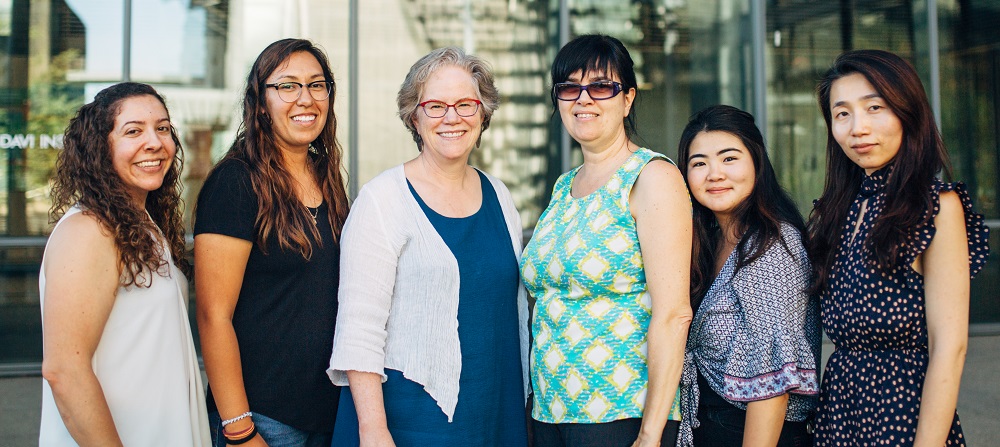 Perhaps it should come as no surprise that a research lab in the College of Agricultural and Environmental Sciences that focuses on microbial food safety of fresh fruits, vegetables, and nuts keeps safety at the forefront. As the chair of the Department of Food Science and Technology, Linda Harris leads a lab that routinely works with biosafety level 2 organisms, which can cause infections in humans and sometimes animals. The lab examines how those organisms survive in foods such as basil, lettuce, onions, almonds, walnuts, and pistachios.“Every time we run an experiment, we think about what the hazards are and about how to handle it safely,” said Vanessa Lieberman, a laboratory assistant who serves as one of the lab’s two “gatekeepers” along with Anne-Laure Moyne. In fact, the lab does a dry run of any new experiment without its pathogens, to make sure they are correctly handled throughout the experiment’s processes and to identify potential issues. Lieberman also trains nearby labs on how to handle medical waste and biohazardous organisms. She has implemented a department-specific training class on biosafety, as a practical training opportunity to walk through the use of specific accumulation sites. “People are often less concerned about safety when it comes to biosafety than with chemicals or toxins,” Lieberman said. “But the things that you’re working with can be deadly—and if it’s not you [who gets sick], it could be your family or your neighbor or your pets.”
Perhaps it should come as no surprise that a research lab in the College of Agricultural and Environmental Sciences that focuses on microbial food safety of fresh fruits, vegetables, and nuts keeps safety at the forefront. As the chair of the Department of Food Science and Technology, Linda Harris leads a lab that routinely works with biosafety level 2 organisms, which can cause infections in humans and sometimes animals. The lab examines how those organisms survive in foods such as basil, lettuce, onions, almonds, walnuts, and pistachios.“Every time we run an experiment, we think about what the hazards are and about how to handle it safely,” said Vanessa Lieberman, a laboratory assistant who serves as one of the lab’s two “gatekeepers” along with Anne-Laure Moyne. In fact, the lab does a dry run of any new experiment without its pathogens, to make sure they are correctly handled throughout the experiment’s processes and to identify potential issues. Lieberman also trains nearby labs on how to handle medical waste and biohazardous organisms. She has implemented a department-specific training class on biosafety, as a practical training opportunity to walk through the use of specific accumulation sites. “People are often less concerned about safety when it comes to biosafety than with chemicals or toxins,” Lieberman said. “But the things that you’re working with can be deadly—and if it’s not you [who gets sick], it could be your family or your neighbor or your pets.”Imai-Leonard Lab, School of Veterinary Medicine
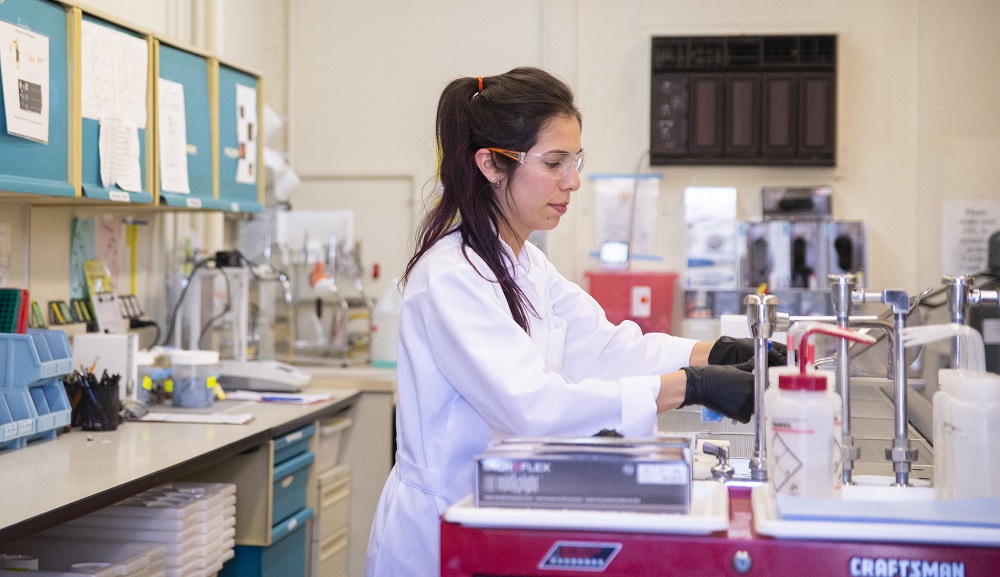 Every Monday morning in the Comparative Pathology Lab at the UC Davis School of Veterinary Medicine kicks off the week the same way: with rounds to discuss what projects are coming up and a chance to discuss any potential safety concerns. Led by Denise Imai-Leonard, lab analyzes blood and tissue samples for researchers working with lab animals, particularly mice and rats. The lab is self-supporting and provides services to other UC Davis labs, and also to UCSF, UC Merced, UC Santa Cruz, the California Animal Health & Food Safety Laboratory System, and to small biotech firms. The lab’s dozen staff members work with a rotating mix of residents in medicine, pathology, and veterinary programs, student workers, and interns. So consistent safety training, accurate use of personal protective equipment (PPE), and clear communication are important to maintain this lab’s strong safety culture. This summer the team was reminded of the importance of their safety precautions when they confirmed the presence of Q fever during routine screening of sheep tissue that was otherwise on its way to a UC Davis Veterinary Medicine lab for students to use as part of their education. The team was using the proper protocol, working under a hood and using respirators, and the discovery meant working with campus Environmental Health & Safety and the CDC for full reporting. This was the first time the lab has had a positive test result for Q fever in 5 years. “When we alerted our partners at the other lab on campus, they had just been talking about why do we do this testing since it’s always negative,” said Jenelle Fraser, the lab’s assistant director, and safety officer. “But when it’s positive, the exposure could have had a huge impact.”
Every Monday morning in the Comparative Pathology Lab at the UC Davis School of Veterinary Medicine kicks off the week the same way: with rounds to discuss what projects are coming up and a chance to discuss any potential safety concerns. Led by Denise Imai-Leonard, lab analyzes blood and tissue samples for researchers working with lab animals, particularly mice and rats. The lab is self-supporting and provides services to other UC Davis labs, and also to UCSF, UC Merced, UC Santa Cruz, the California Animal Health & Food Safety Laboratory System, and to small biotech firms. The lab’s dozen staff members work with a rotating mix of residents in medicine, pathology, and veterinary programs, student workers, and interns. So consistent safety training, accurate use of personal protective equipment (PPE), and clear communication are important to maintain this lab’s strong safety culture. This summer the team was reminded of the importance of their safety precautions when they confirmed the presence of Q fever during routine screening of sheep tissue that was otherwise on its way to a UC Davis Veterinary Medicine lab for students to use as part of their education. The team was using the proper protocol, working under a hood and using respirators, and the discovery meant working with campus Environmental Health & Safety and the CDC for full reporting. This was the first time the lab has had a positive test result for Q fever in 5 years. “When we alerted our partners at the other lab on campus, they had just been talking about why do we do this testing since it’s always negative,” said Jenelle Fraser, the lab’s assistant director, and safety officer. “But when it’s positive, the exposure could have had a huge impact.”Xu Lab, College of Biological Sciences
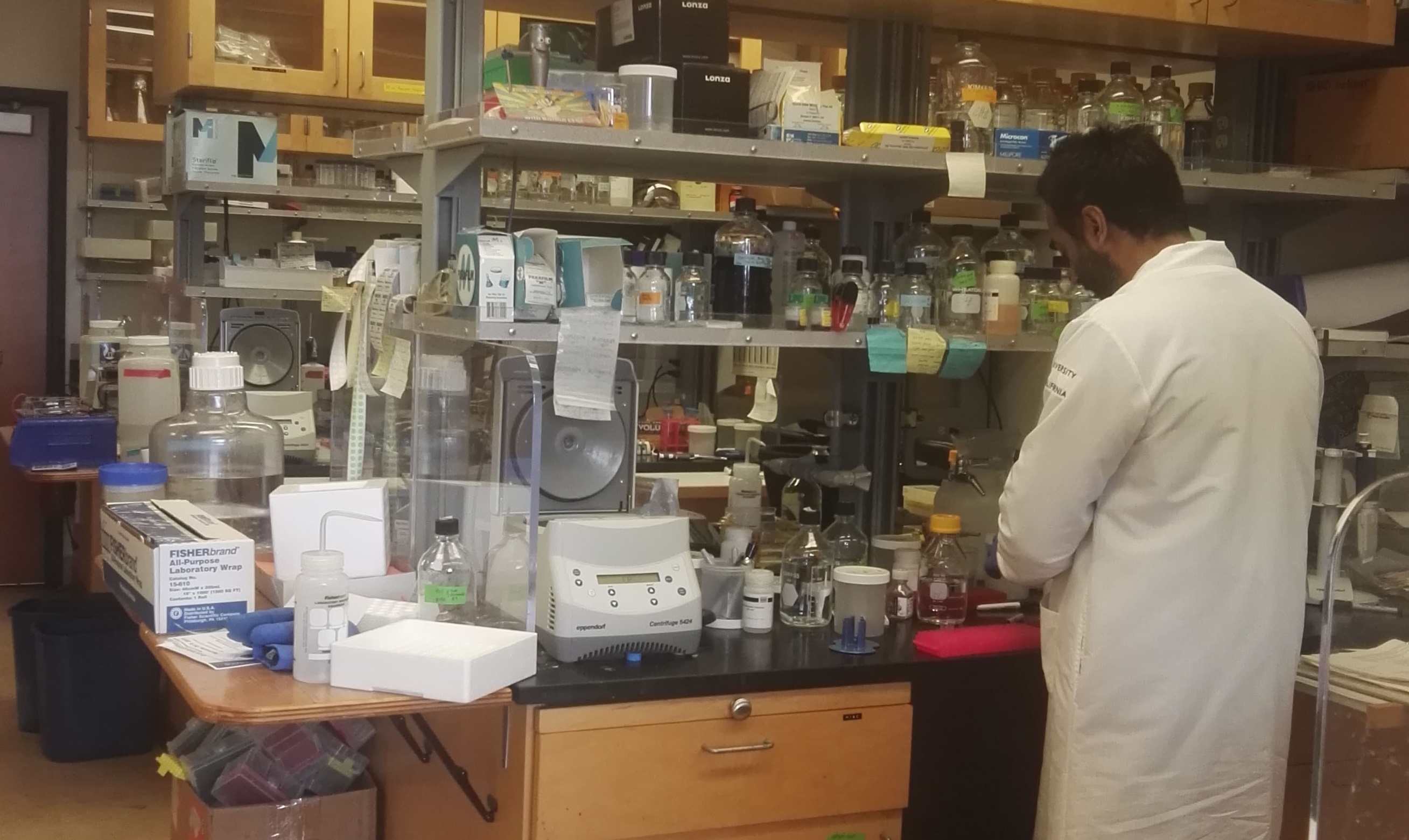 Inside Associate Professor Xu’s lab in Briggs Hall, you’ll find a tight-knit team carefully peering over microscopes as they study the ends of chromosomes in human cells – researching contributing factors to cancer progression and aging. Since starting in the lab in 2009, Professor Xu has had to maintain the highest level of safety measures – after all, they are exposed to radioactivity inside the lab. They heavily practice using proper attire including gloves, safety goggles, lab robes, and shoe coverings on an everyday basis. But it’s not just the wardrobe that keeps this lab so safe – it’s the people. With three post-doctoral fellows on hand, they conduct trainings to handle the radioactivity inside the lab to ensure a safe research environment. Over the years, UCOP has also introduced numerous safety changes and Professor Xu’s lab team has implemented each one. They remain supportive and approachable towards a healthy teaching and research environment.
Inside Associate Professor Xu’s lab in Briggs Hall, you’ll find a tight-knit team carefully peering over microscopes as they study the ends of chromosomes in human cells – researching contributing factors to cancer progression and aging. Since starting in the lab in 2009, Professor Xu has had to maintain the highest level of safety measures – after all, they are exposed to radioactivity inside the lab. They heavily practice using proper attire including gloves, safety goggles, lab robes, and shoe coverings on an everyday basis. But it’s not just the wardrobe that keeps this lab so safe – it’s the people. With three post-doctoral fellows on hand, they conduct trainings to handle the radioactivity inside the lab to ensure a safe research environment. Over the years, UCOP has also introduced numerous safety changes and Professor Xu’s lab team has implemented each one. They remain supportive and approachable towards a healthy teaching and research environment.
Data Collection Underway for 2026 Award!
The awards are endorsed by the faculty-led Chemical and Lab Safety Committee. All labs in the comprehensive annual lab safety review program are eligible for this award and data collection begins July 1 annually. Grand Prize winners are not eligible to win the prize again for 3 years; School/College winners are not eligible back-to-back. Good luck and stay tuned for extra credit opportunities.
- How is the data collected?
Eligibility & Scoring Criteria
Phase 1: All labs that a) receive a comprehensive annual lab safety review and b) are headed by an academic senate member in the professor series are eligible to win. Each lab will be evaluated on data from lab safety reviews/inspections/audits.
Phase 2: Top candidates from each School/College will be evaluated via questionnaire by EH&S specialists and other stakeholders. Labs will be evaluated for their emphasis on safety.
Grand prize winner: From the six semi-finalists, one grand prize winner will be assigned to the research lab that best demonstrates excellence in lab safety. This lab will receive a $5000 award.
Extra Credit Opportunities: Extra credit could make all the difference in whether your lab is selected and will be announced to all eligible labs. For example, in 2021, the extra credit question was: "What safety practices did you institute during the pandemic that you plan to continue in your lab? The COVID-19 pandemic forced changes to the way we work, including how we think about safety. In two paragraphs or less, tell us about pandemic-related safety practices that will live on in your lab."- What are the categories and the timeline?
Categories
Labs will be assessed by School/College (College of Letters & Science, College of Agricultural & Environmental Sciences, College of Biological Sciences, College of Engineering, School of Veterinary Medicine, School of Medicine); each lab's review/audit/inspection findings will be weighed against those within their School/College. Of the six, a semi-finalist will be chosen for each; one lab per year will be awarded the grand prize.
Timeline
Data collection from audits/inspections/reviews will be collected for a one-year period, starting July 1. An award luncheon will occur the following fall.
- What are the prizes?
All Lab Safety Award semi-finalists will be awarded the following:
The winner of the grand prize will receive the above prizes, plus a trophy.